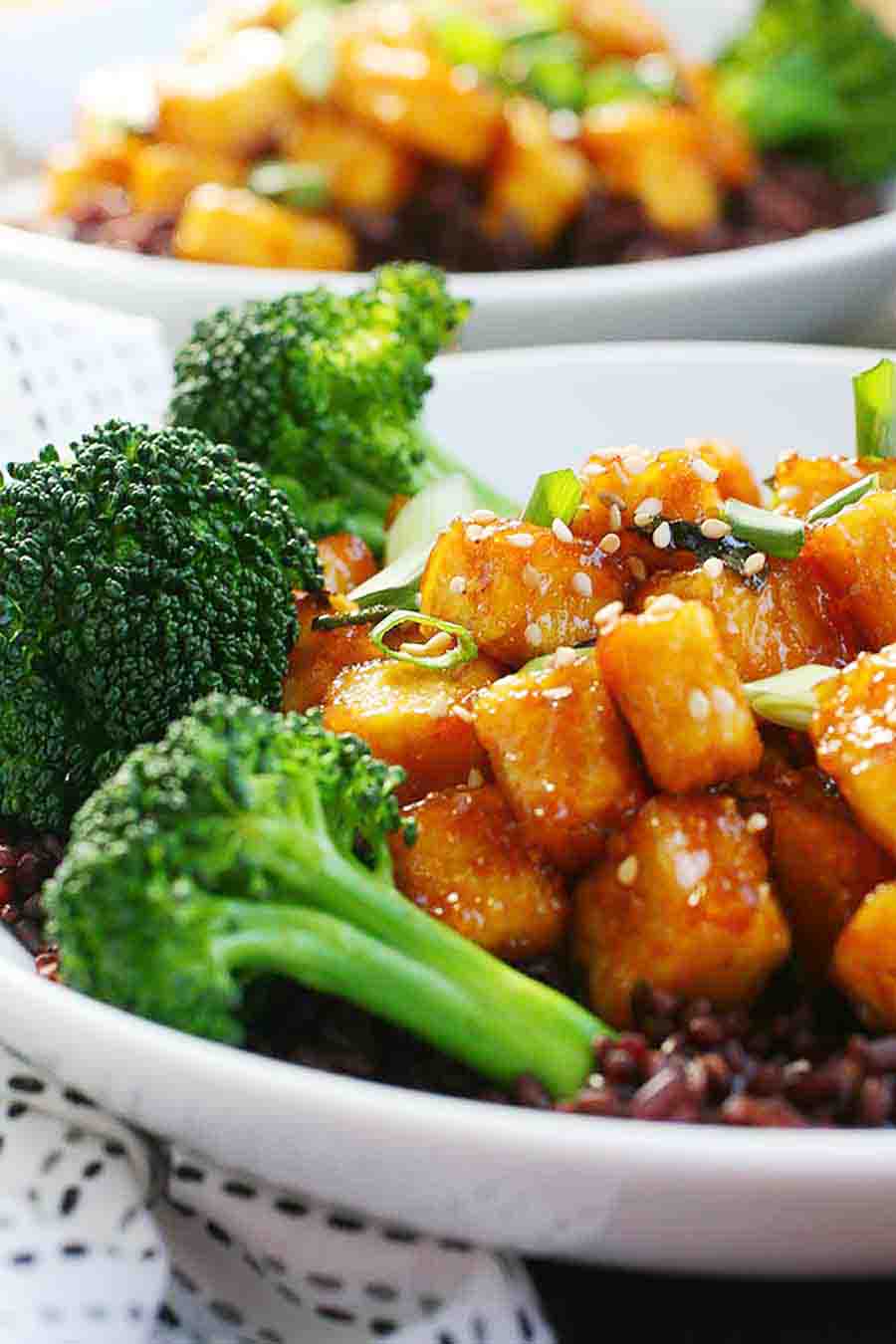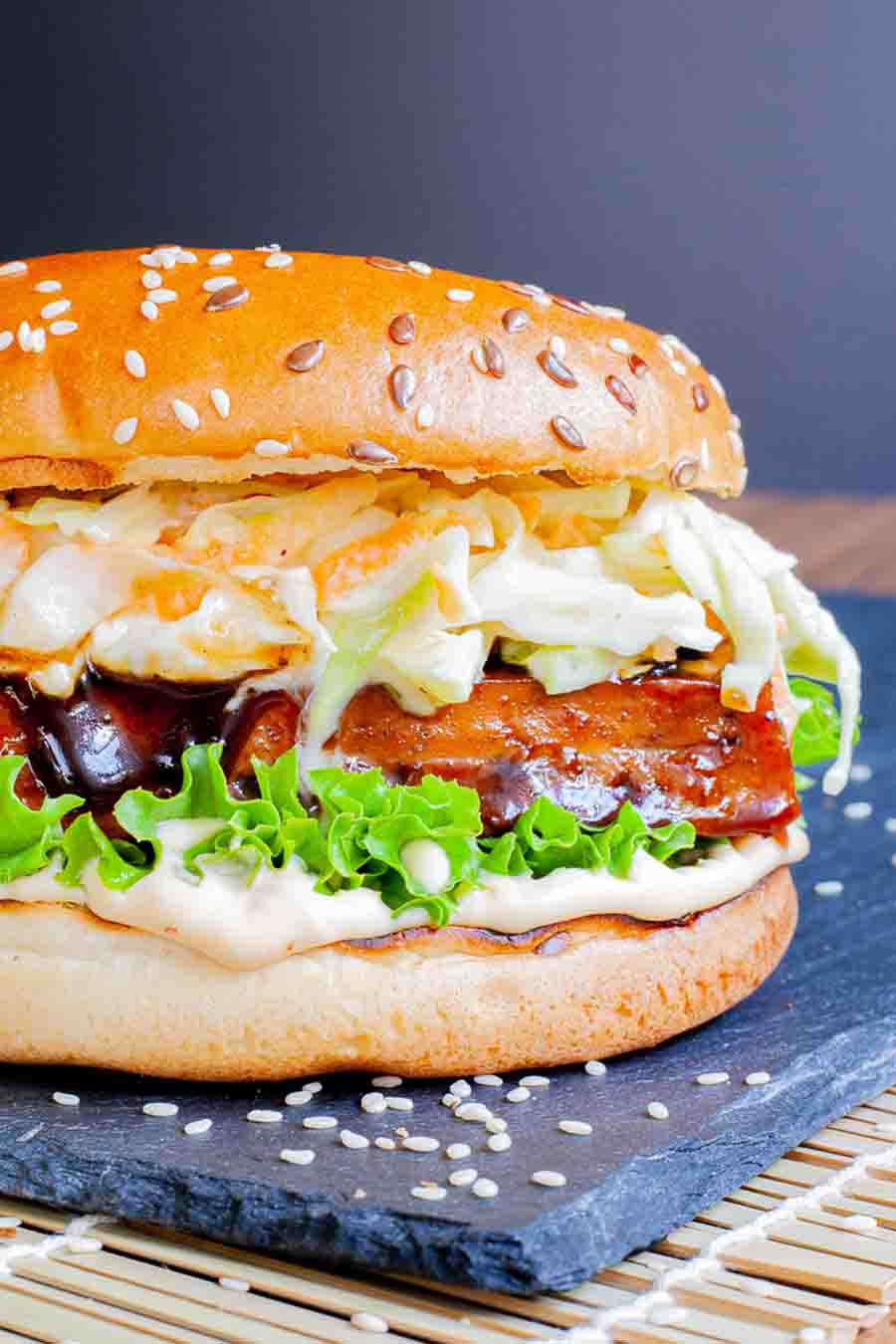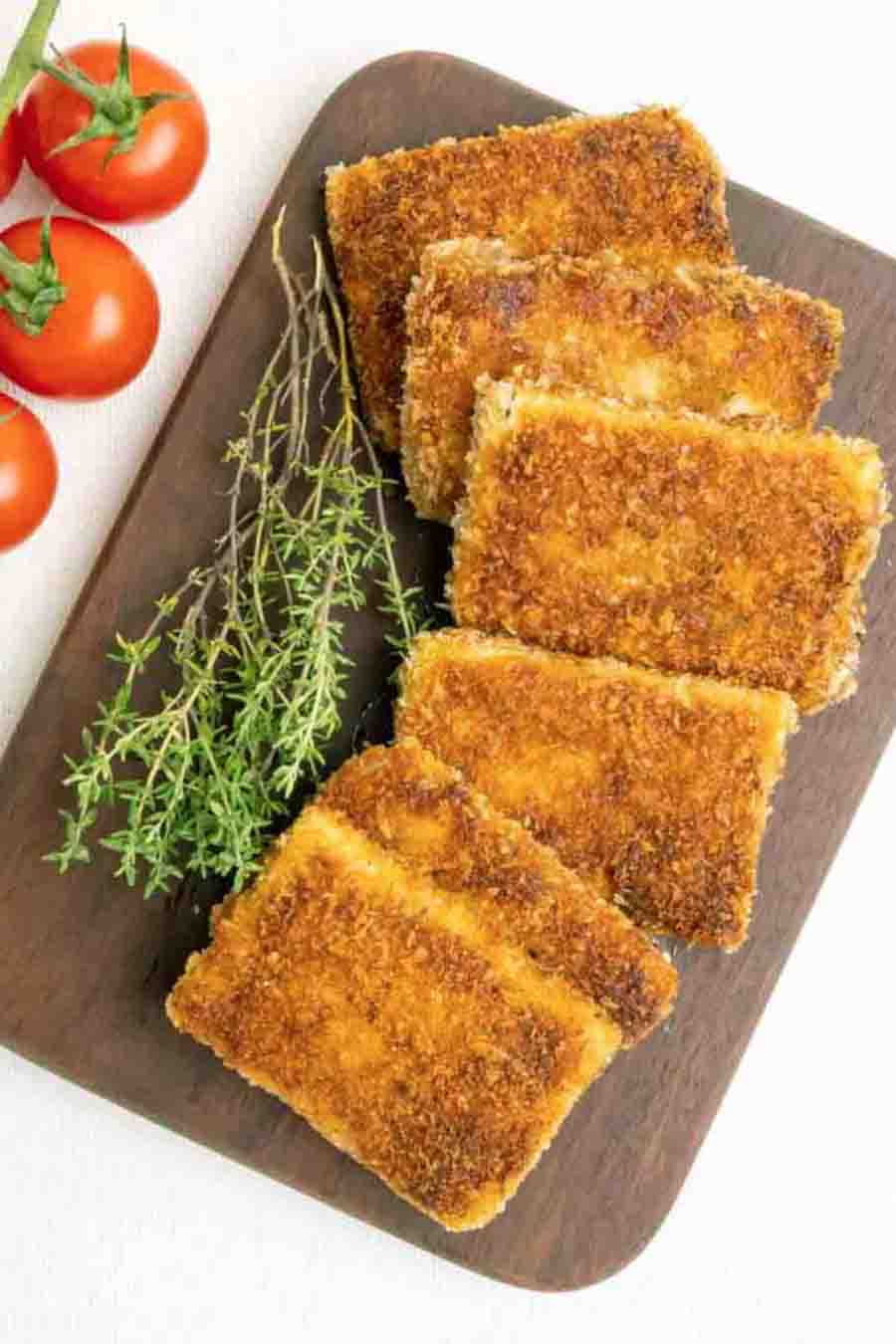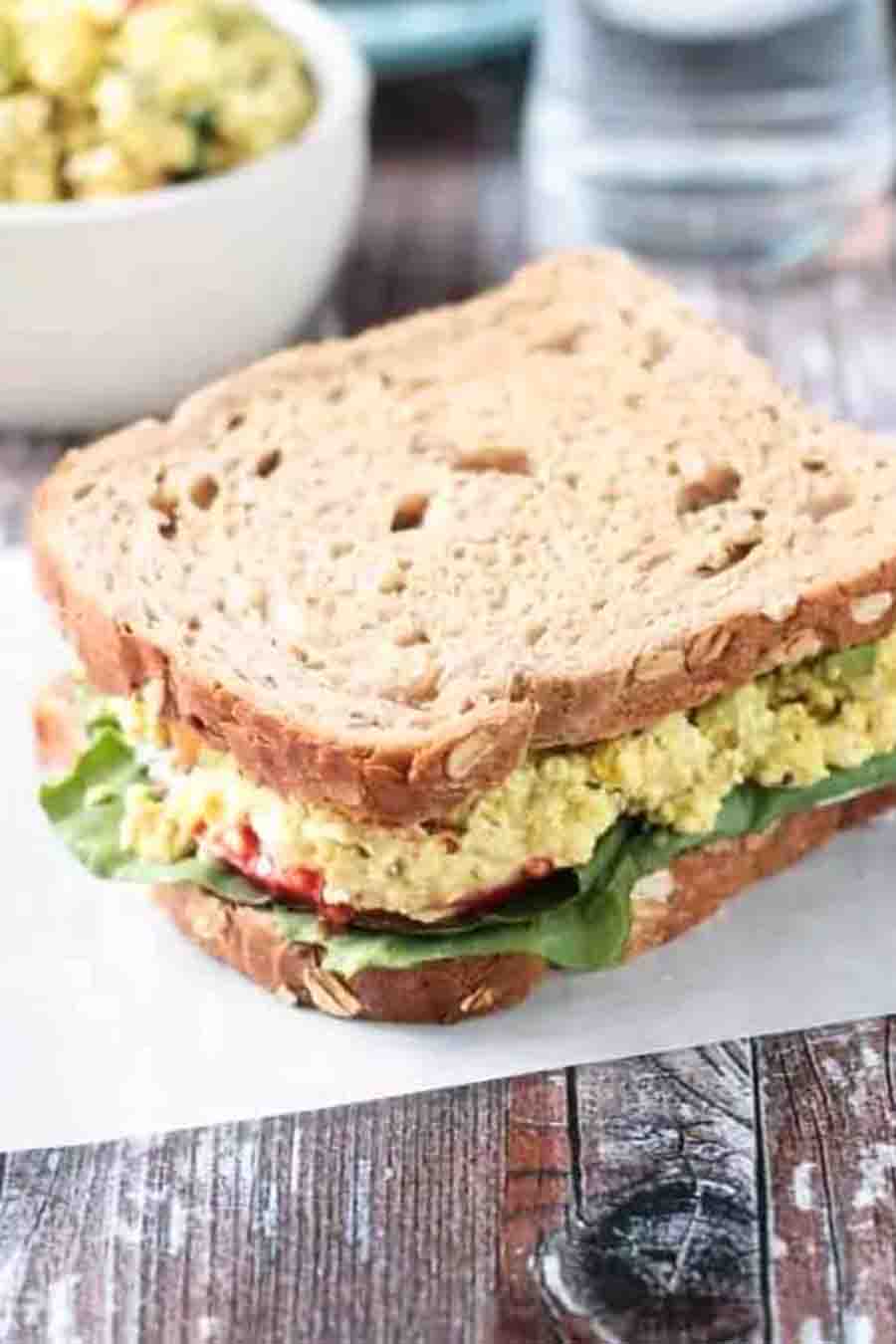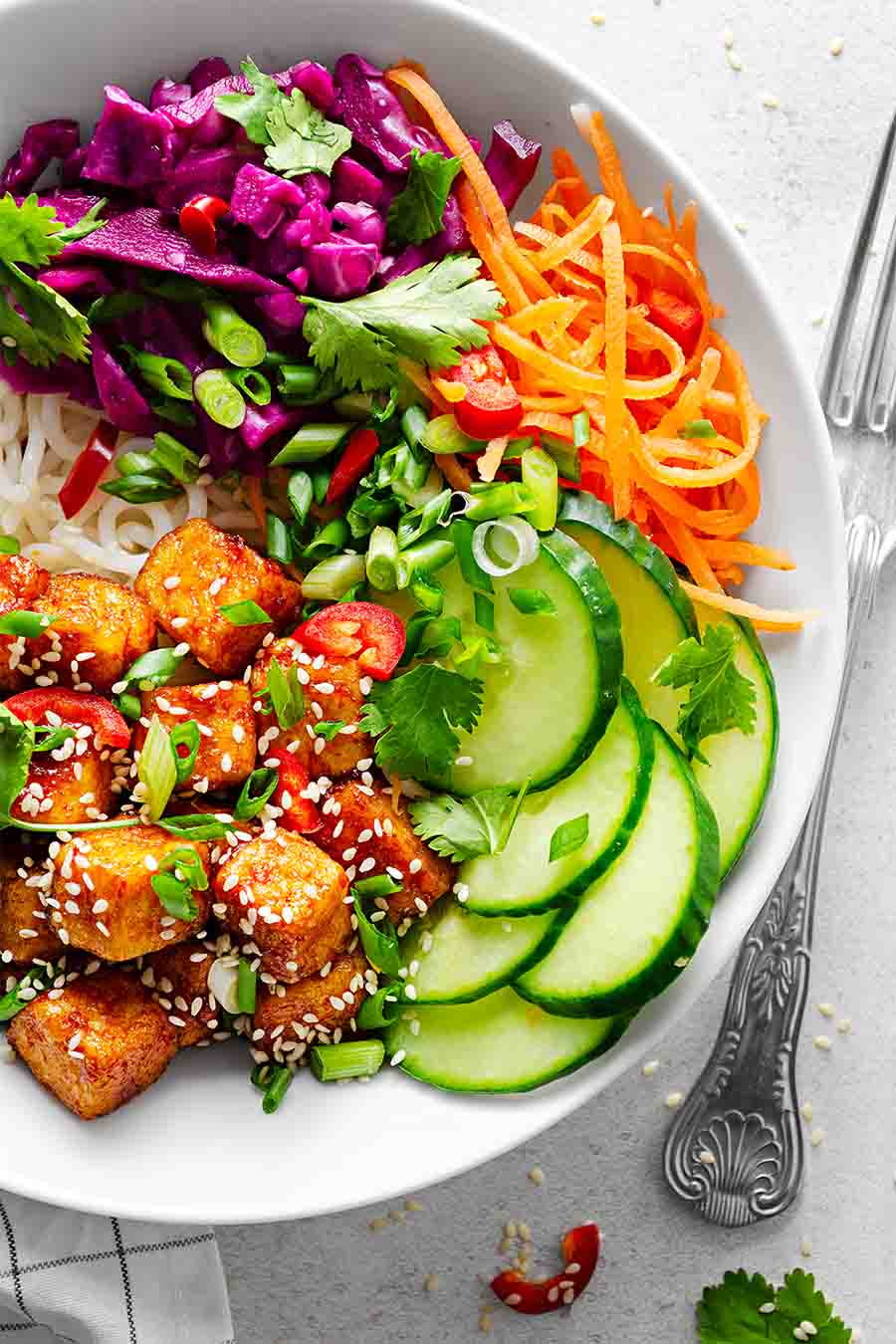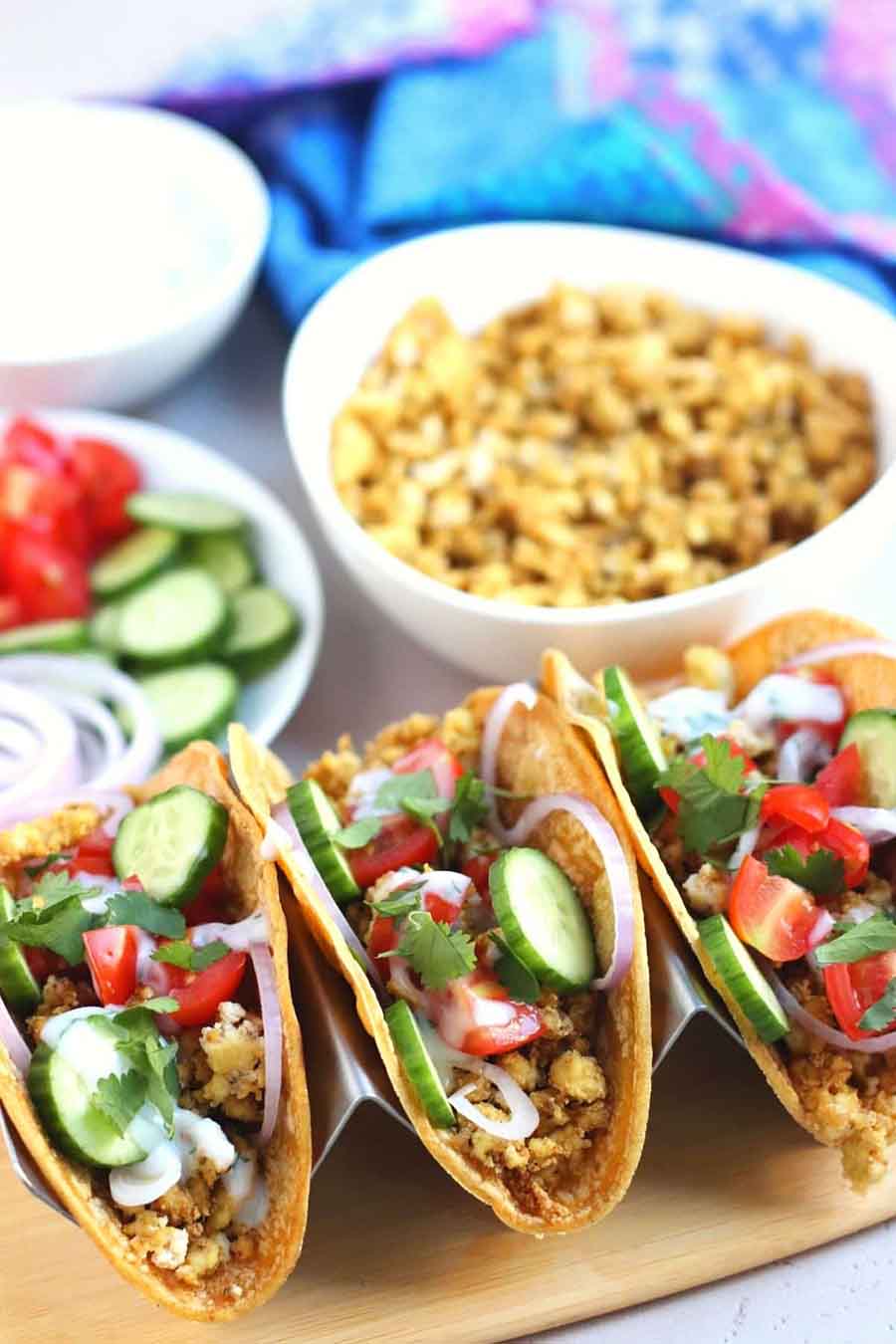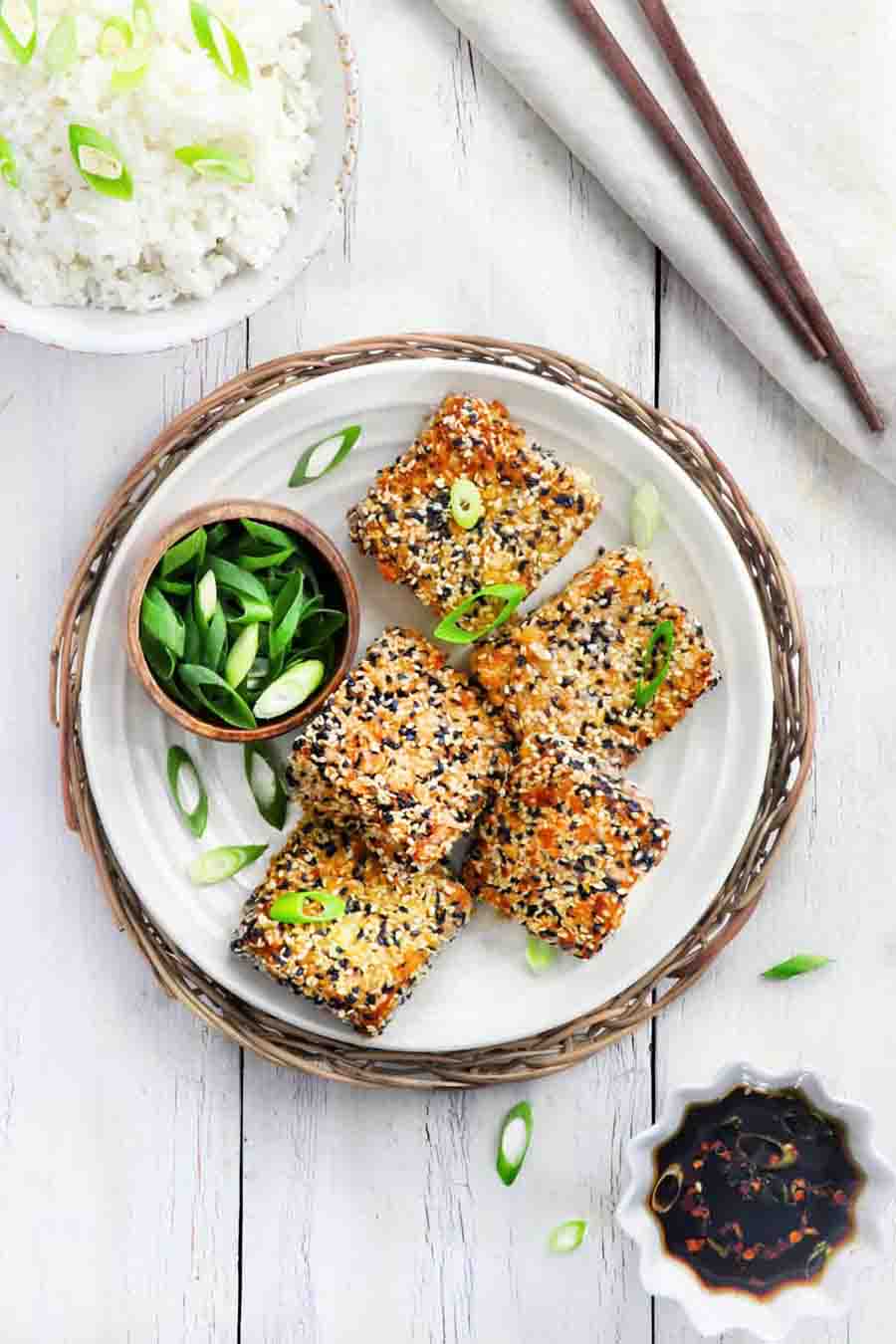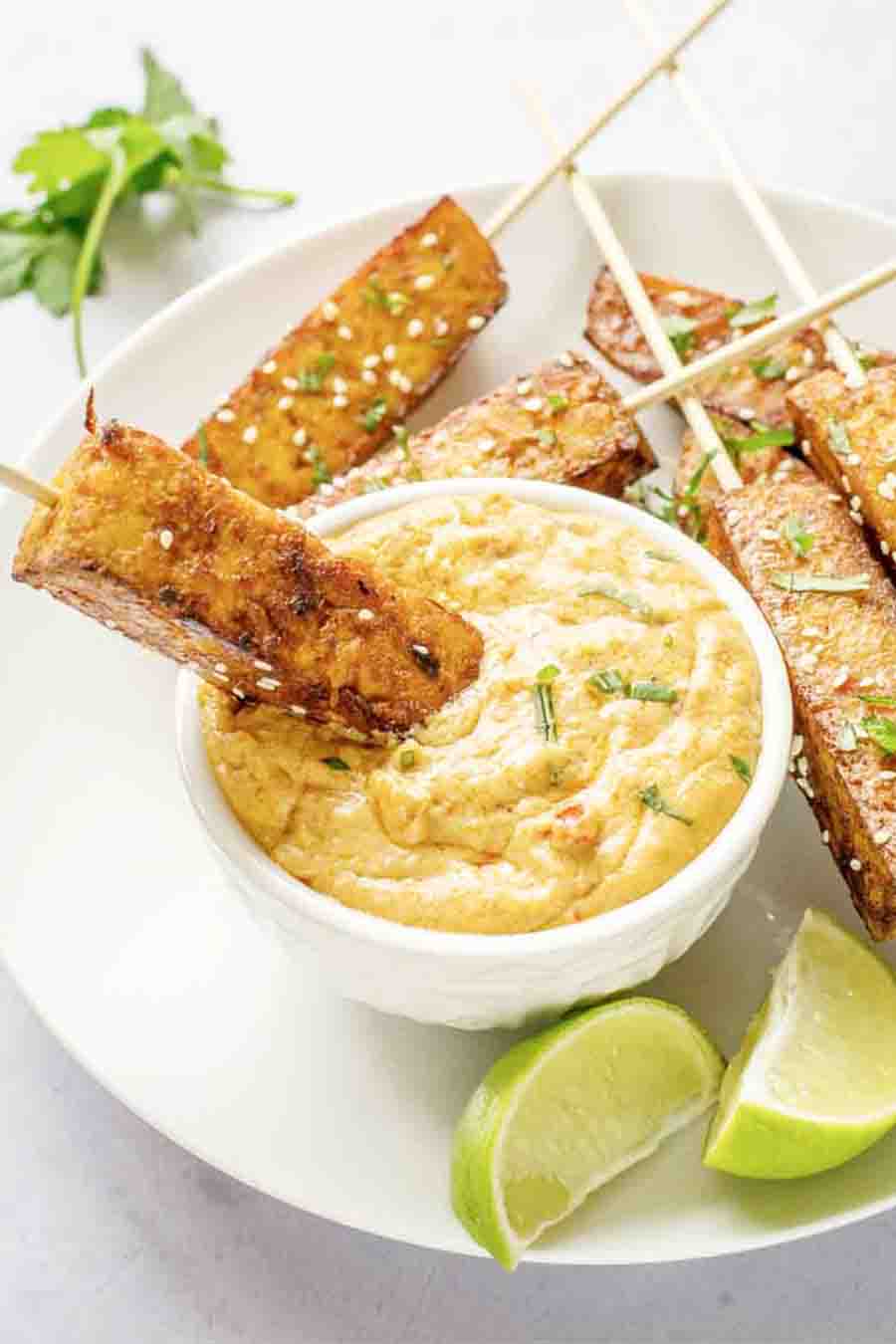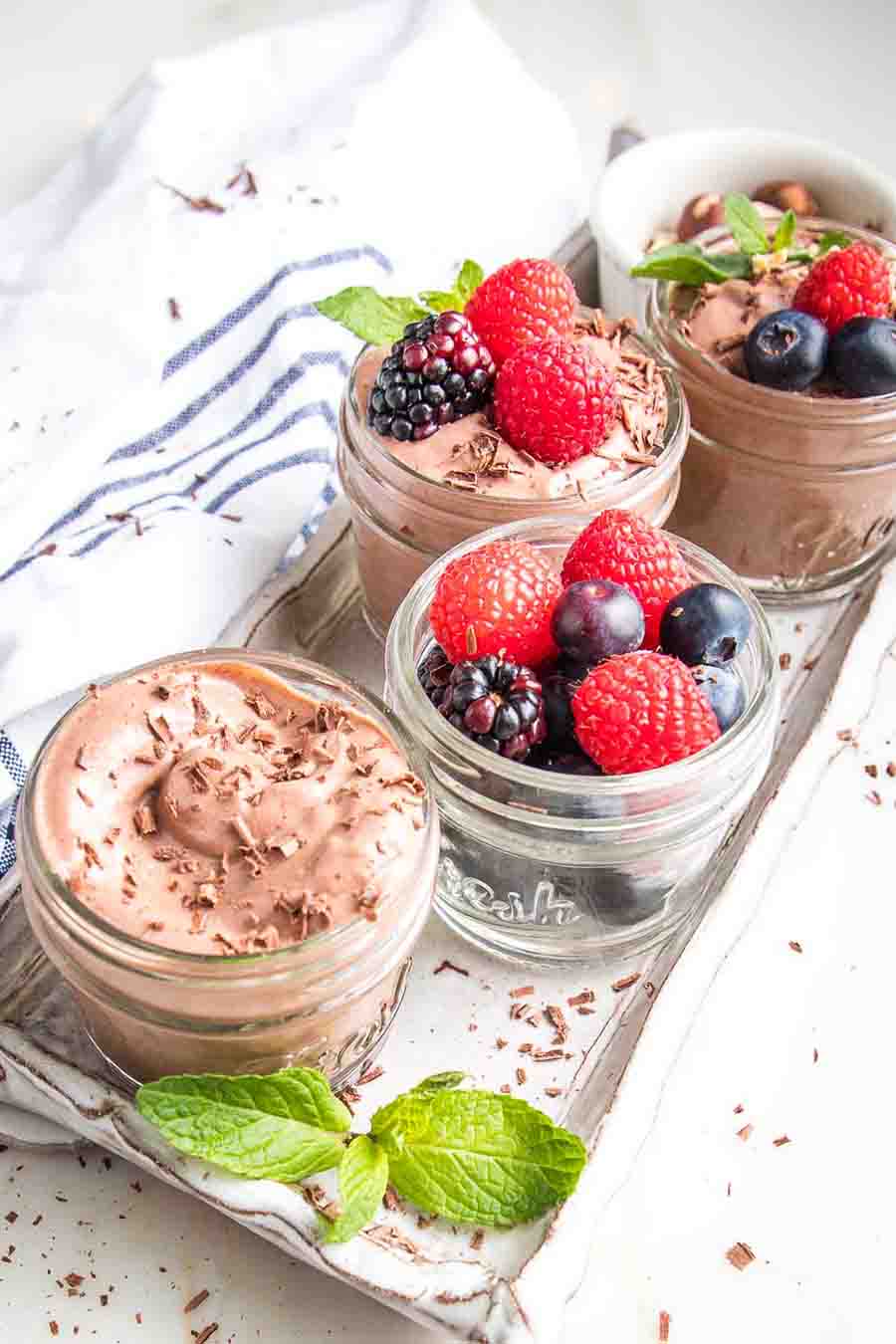Home / Guides / Food & Drink Guides / Plant Proteins / Tofu
Tofu
An in-depth look at one of the most controversial plant foods.
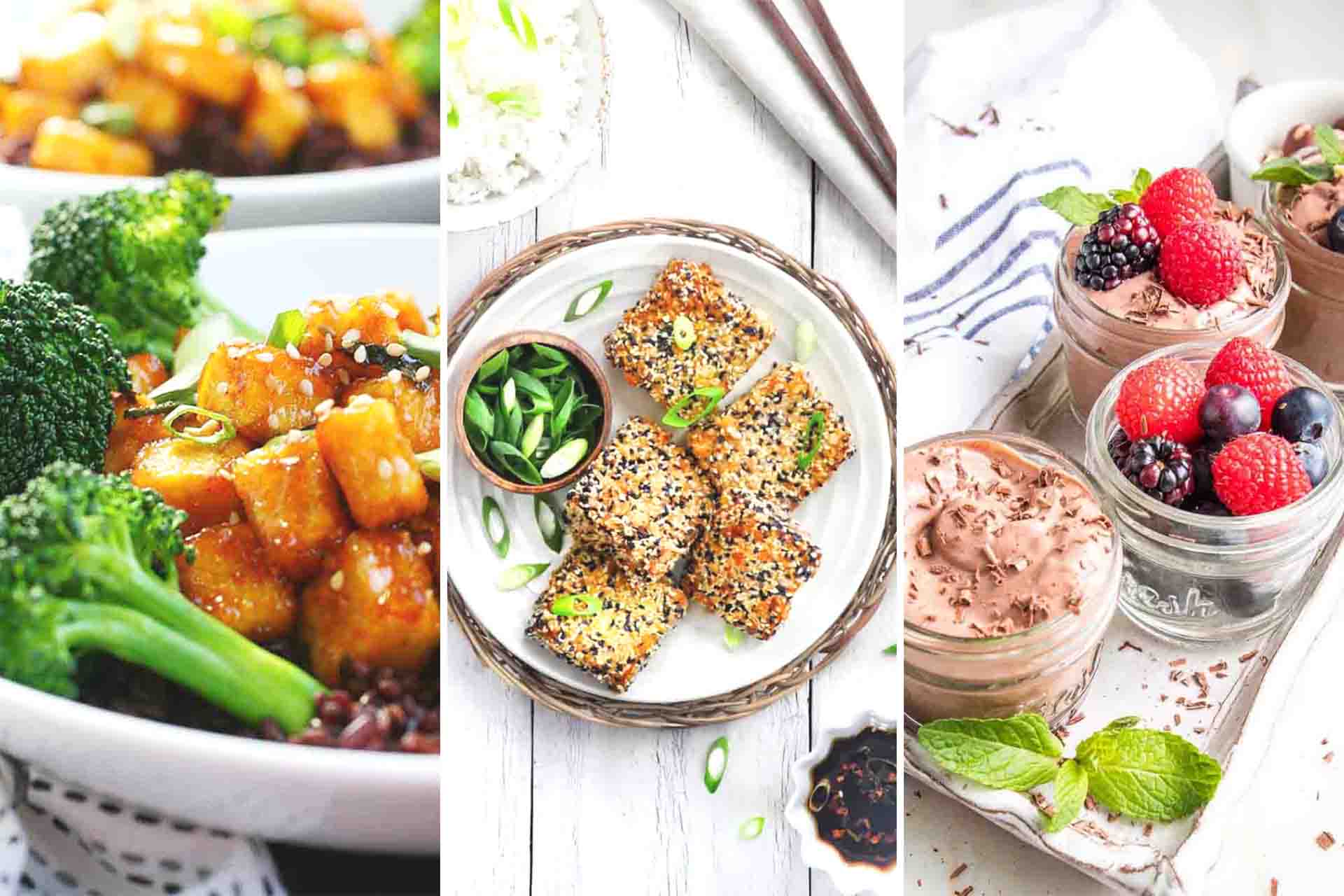
Published: May 2015
Last Update: February 2023
Reading Time: 15 minutes
A hotly debated food
Tofu is one of those foods that can spark a passionate debate among vegans and non-vegans.
Some, like me, adore tofu for its versatility and impressive nutritional profile. Others avoid it because they mistakenly believe it's a genetically modified, cancer-inducing poison.
With so much conflicting information, you're probably wondering whether to include tofu into your vegan diet. You're not alone. I can help.
First, I'll cover where it comes from and how people make it. Next, we'll cover soy nutrition and hear from real-life dietitians. Then, it's time to go shopping with a helpful buying guide. Finally, sweet and savory vegan recipes for you to try at home.
Let's begin.
QUICK NAVIGATION
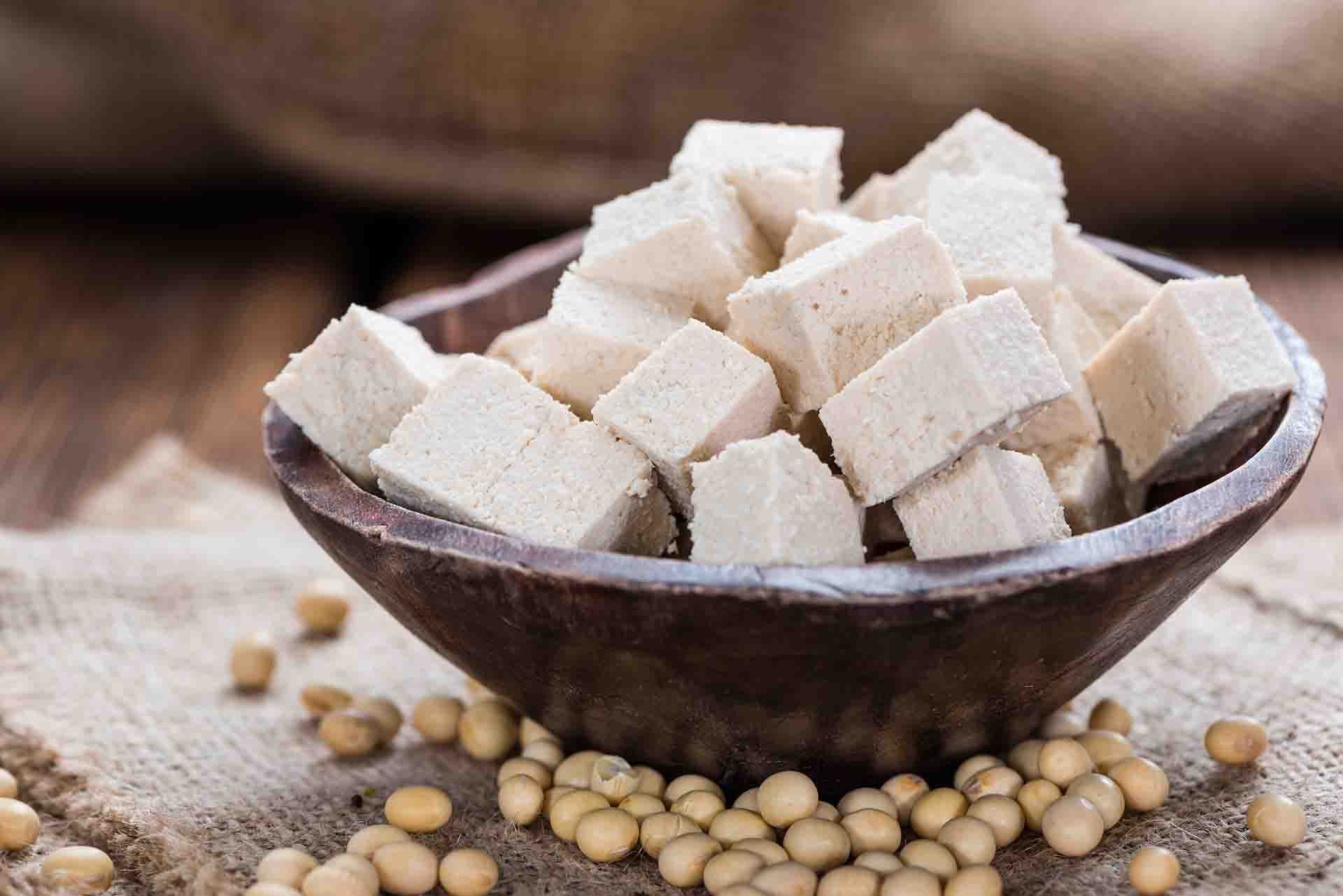
Uncooked cubed tofu / Source
1. Basics
If you're new to tofu, start here.
Origins
Tofu has a long history. Also known as bean curd, it’s a food made from soybeans that originated in China more than 2,000 years ago. Production was then introduced to Korea and later to Japan around 710 – 794 AD.
After that, it spread to other parts of East Asia, likely due to the spread of Buddhism.
What does tofu taste like?
By itself, tofu has a neutral taste. While fresh versions are flavorful, commercially-available versions have virtually no flavor.
It acts like a sponge, absorbing the flavor of the ingredients in any recipe.
This versatility makes it a favorite for stir-frys, sandwich fillings, sauces, soups, smoothies, or decadent desserts.
How is tofu made?
Tofu-making is somewhat similar to the process used for making cheese but uses soymilk instead of dairy milk.
First, the process begins by soaking dried soybeans in water for a period. Then, the beans are drained, rinsed, and placed into a food processor to grind them together with water. This process creates a thick mixture.
Simmering the mixture in a large pot of water separates the soymilk from the solids. After pouring the soymilk through a sieve, a natural firming agent is added, causing curds to form.
Finally, the curds are pressed to remove the whey. It’s this action that forms the typical block-style shape.
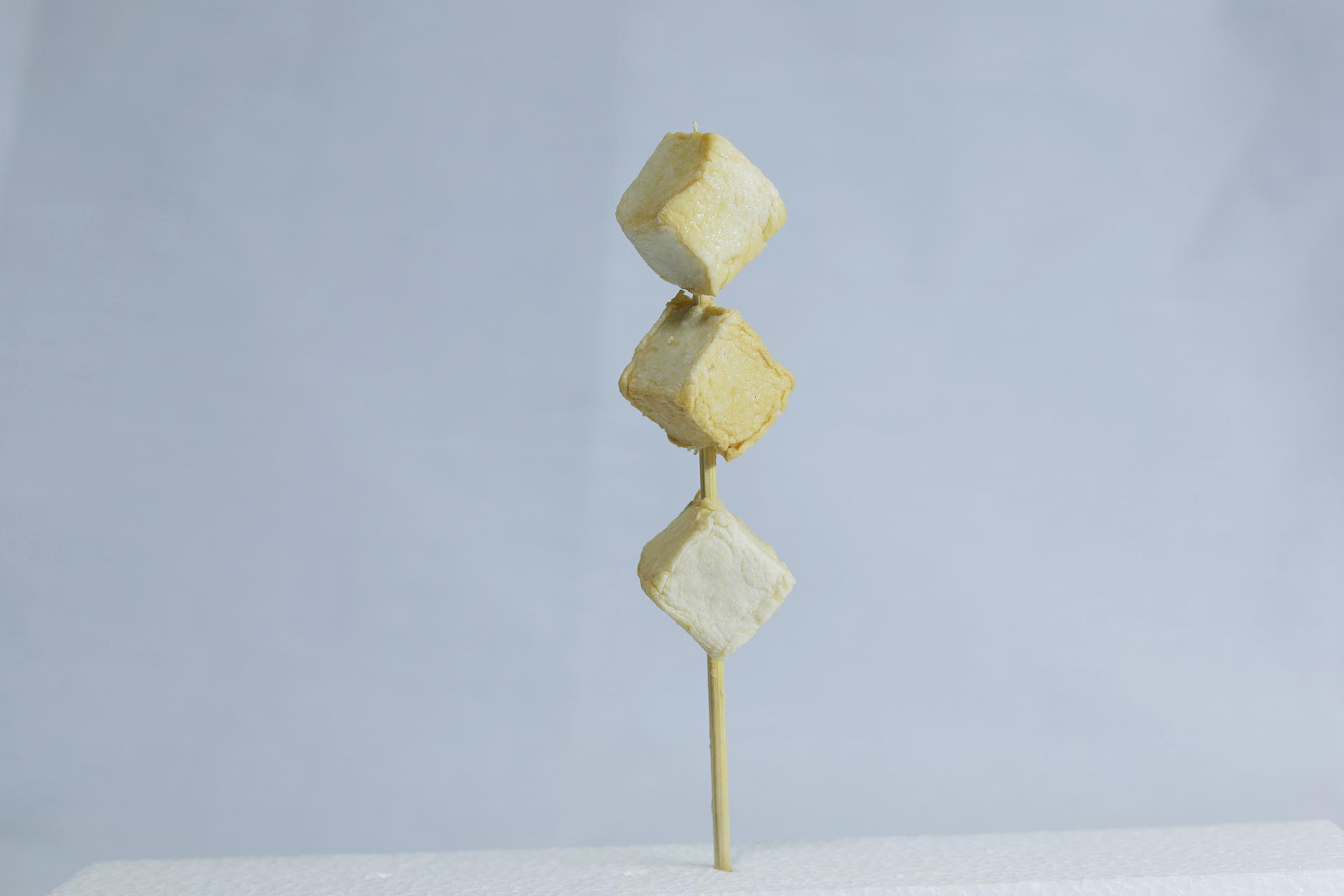
Tofu cubes / Source
2. Tofu nutrition information
Evidence-based nutrition information from licensed dietitians.
It's made from soy (most of the time)
Unlike other whole soy foods like tempeh and minimally processed soy foods like tofu, textured vegetable protein is a processed soy product.
You might think, “Eating a bunch of processed soy food doesn’t sound all that healthy to me.” And you’d be correct, but only because no healthy eating plan should consist of a bunch of processed foods, soy, or otherwise.
Please don’t listen to me; I’m not a dietitian.
For accurate, evidence-based information, I turned to experts on vegan nutrition.
Here’s what they had to say.
Long recognized as a nutrient-dense food, soybeans contain all of the essential amino acids as well as an impressive list of vitamins and minerals like:
- Calcium
- Iron
- Magnesium
- Manganese
- Phosphorous
- Potassium
- Selenium
- B vitamins
- Zinc
Soy also contains fiber, omega-3, and omega-6 fatty acids and is an excellent source of protein.
I checked with an expert on vegan nutrition, Anya Todd, MS, RD, LD to know more.
Experts agree
According to Todd, the nutrition in soy foods can vary among different preparations, so a few servings a day are appropriate.
“Soy is perfectly healthy in moderation. Two to three servings of soy foods a day is a safe recommendation.”
Research shows that people who eat one to two servings of soyfoods daily gain many health benefits, such as reducing the risk of heart disease, osteoporosis, and specific forms of cancer. (1, 2)
Author and vegan dietitian Virginia Messina, MPH, RD, concurs.
“Don’t be afraid of these foods and don’t ignore them. Plant proteins are good for you.”
Messina places tofu into the "core vegan foods" group, which she recommends including in any healthy eating plan. (3)
Soy isoflavones
Soybeans contain phytoestrogens called isoflavones.
Some people claim that these soy isoflavones act like the female sex hormone estrogen in the body and can potentially increase the risk of cancers — especially breast cancer — and reduce the testosterone levels in men.
But concerns about adverse effects are not supported by the clinical literature available at the time of this writing.
Soy is one of the most researched foods — nearly 2,000 soy-related papers published annually — and based on the health benefits in these epidemiologic studies and the benefits noted in clinical trials, soy is not only safe to eat, but it’s also beneficial when eaten in moderation. (1, 2, 5)
Genetically modified organisms (GMOs)
Some people will avoid tofu because they are afraid to consume GMOs.
A genetically modified organism (GMO) is any organism whose genetic material has been manipulated in a lab using genetic engineering techniques. Scientists alter genes using DNA from different living organisms like bacteria or viruses to get specific traits such as resistance to disease or tolerance of herbicides or pesticides. (4)
Soybeans are the second-largest crop grown in the US after corn and are also one of the top genetically modified crops.
These numbers are significant because even if you're not eating soy foods directly — if you're eating animals — you're most likely still consuming soy. Currently, 85 percent of all GMO soybeans end up in animal feed for farmed animals, where it eventually ends up on your plate.
Buying GMOs
There are criticisms about the practice surrounding bioengineering and the production of genetically modified organisms. In more than 60 countries worldwide, there are significant restrictions or outright bans on their manufacture and sale.
Here in the US, the government has approved using bioengineered crops. (4)
When buying TVP, unless the product has a specific GMO-free label, then there’s a good chance it’s genetically modified.
Finding non-GMO textured vegetable protein is easy for those looking to avoid GMO soy. Look for the information on the label when purchasing.

Grocery carts at the market / Source
3. Shopping guide
Here’s what you need to know before you head to the store.
Find tofu in stores
Widely available, you’ll find it at most local grocery stores or international markets.
Check the refrigerated section for fresh tofu in water and grocery shelves for aseptic containers of silken varieties.
What is the difference between styles?
Tofu made from soy comes in several different styles and textures based on the number of natural coagulants and water used in its production.
The variety of options could be confusing if you’ve never purchased it before. The key to a successful recipe is choosing the right style for the dish.
Here’s a primer to help you make the right choice.
Firm or extra firm style
This style has a firm to very firm texture. Generally speaking, the two types are used interchangeably.
Use in recipes like:
- Bakes
- BBQs
- Braises
- Scrambles
- Stir-frys
Medium firm style
Medium Firm has a softer texture than either firm variety but is more firm than the soft style.
Use in recipes like:
- Dairy-Free Cheeses
- Dressings
- Soups
Soft or silken style
Of all the forms available, this is the most delicate. Unlike the other styles, silken ones are made without draining or pressing. As a result, it has a smooth, creamy texture similar to custard.
Silken style comes in three additional varieties: Soft, Firm, and Extra Firm. The difference in firmness comes from the varying levels of soy protein each contains.
Use soft styles in recipes for:
- Sauces
- Dips
- Drinks
- Baking
Firm & extra firm styles are best in recipes for:
- Thicker sauces
- Soups
- Salads
- Entrees
Is soy-free tofu available?
Yes! Tofu made from soybeans is the most common form, but it's not the only one. The following brands offer soy-free options:
- Living Harvest made from hemp seeds
- Foodies Pumfu made from pumpkin seeds
Another choice is Burmese tofu. It's of Shan origin, made from water, flour made with yellow split peas, and the Burmese version of chickpea flour known as besan flour. It melts in your mouth, lusciously creamy and silky, delicate yet firm. You won't find this version in stores, it's made at home.

Kitchen pots and pans / Source
4. How to cook tofu
Cooking with tofu couldn’t be easier, but there are some tricks to getting the perfectly cooked dish to the table. Here’s what to know.
Frequently asked questions
Before we get cooking, let's get the answers to the most commonly asked questions about tofu.
Cook like a professional
The key to a successful tofu recipe is choosing the right style for the dish. It's so versatile, it can be made into almost anything.
Here are a few popular preparation methods.
Marinating
- Slices up to 1/2 inch should marinate for at least 10 minutes inside a refrigerator.
- For slices greater than 1/2 inch, marinate at least 2 hours inside the refrigerator.
- For maximum flavor, marinate overnight.
TIP: Freezing and thawing prior to use will help absorb marinades more than tofu that has only been pressed.
Baked basics
- Cut into thick slices and marinate, if desired.
- Place in a single layer in a glass baking pan.
- Bake at 375° for 35 minutes or until golden brown, flipping occasionally.
Frying
- Press the water out
- Dry thoroughly with paper or a kitchen towel
- Cut into 1/2 inch thick slices or cubes
- Heat high-heat oil in a frying pan
- Add in small batches, frequently stirring until the tofu looks beautiful golden puffed-up
- Drain on paper or a kitchen towel to remove excess oil after cooking
BBQ & grilling
- Cut into thick slices and marinate, if desired
- Place in a single layer in a glass baking pan
- Add sauce over the top and marinate for a minimum of 30 minutes
- Broil or grill for five minutes on each side, basting with extra sauce while cooking
Filling & scrambles
- Using a fork, break apart into small bite-size pieces
- Add a small amount of oil to a heated pan and add tofu and cook until lightly browned
- Add chopped vegetables and spices of your choice to the pan
- Cook for 3 to 5 minutes or until vegetables are cooked through
Tofu scramble flavor inspirations
- Mexican-Style: Onion, green pepper, red pepper, corn kernels, black beans spiced with black pepper, oregano, and chili powder. Turn it up with fresh cilantro and a squeeze of fresh lime juice. Top with sliced avocado or a spoonful of your favorite guacamole or salsa.
- Italian-Style: Onion, eggplant, banana peppers, roasted red peppers, and kalamata olives, spiced with black pepper, oregano, basil, and topped with a sprinkle of pine nuts.
- Hearty Scramble: Onion, mushroom, green or red pepper, diced potatoes spiced with black pepper, thyme, and sage. Serve with toast slathered with lots of vegan butter.
- Perfect Kale Scramble: Onion, zucchini, yellow squash (or both), and kale spiced with black pepper, turmeric, and soy sauce.
5. Vegan tofu recipes
Get ready to get cooking. Here are vegan recipes for inspiration.
Savory vegan tofu recipes
- General Tso Tofu
Your Daily Vegan
- Baked Tofu Nuggets
Running on Real Food
- Chinese-Inspired BBQ Tofu Burgers
My Pure Plants
- Breaded Tofu Cutlets
Vegan on Board
- Curried Tofu Salad
Veggie Inspired
- Gochujang Tofu Noodle Bowl
Lovely Jubley
- Mediterranean Crumbled Tofu Tacos
Veggies Save the Day
- Sesame Crusted Tofu
Vegan Huggs
- Easy Satay Tofu
The Veg Space
Sweet vegan tofu recipes
- Raw Peanut Butter Pie
This Healthy Kitchen
- Baked Vegan Cheesecake with Berries
Rainbow Nourishments
- Chocolate Mousse Cake
Nutriciously
- Vegan Cannoli Cones
Plant Powered Couple
- Lemon Tart
My Quiet Kitchen
- Vegan Cherry Strudel
Heartful Table
- Chocolate Pudding
Debra Klien
- French Toast Casserole
Shane & Simple
- Stuffed Vegan Buckwheat Crepes
Yum Vegan Food
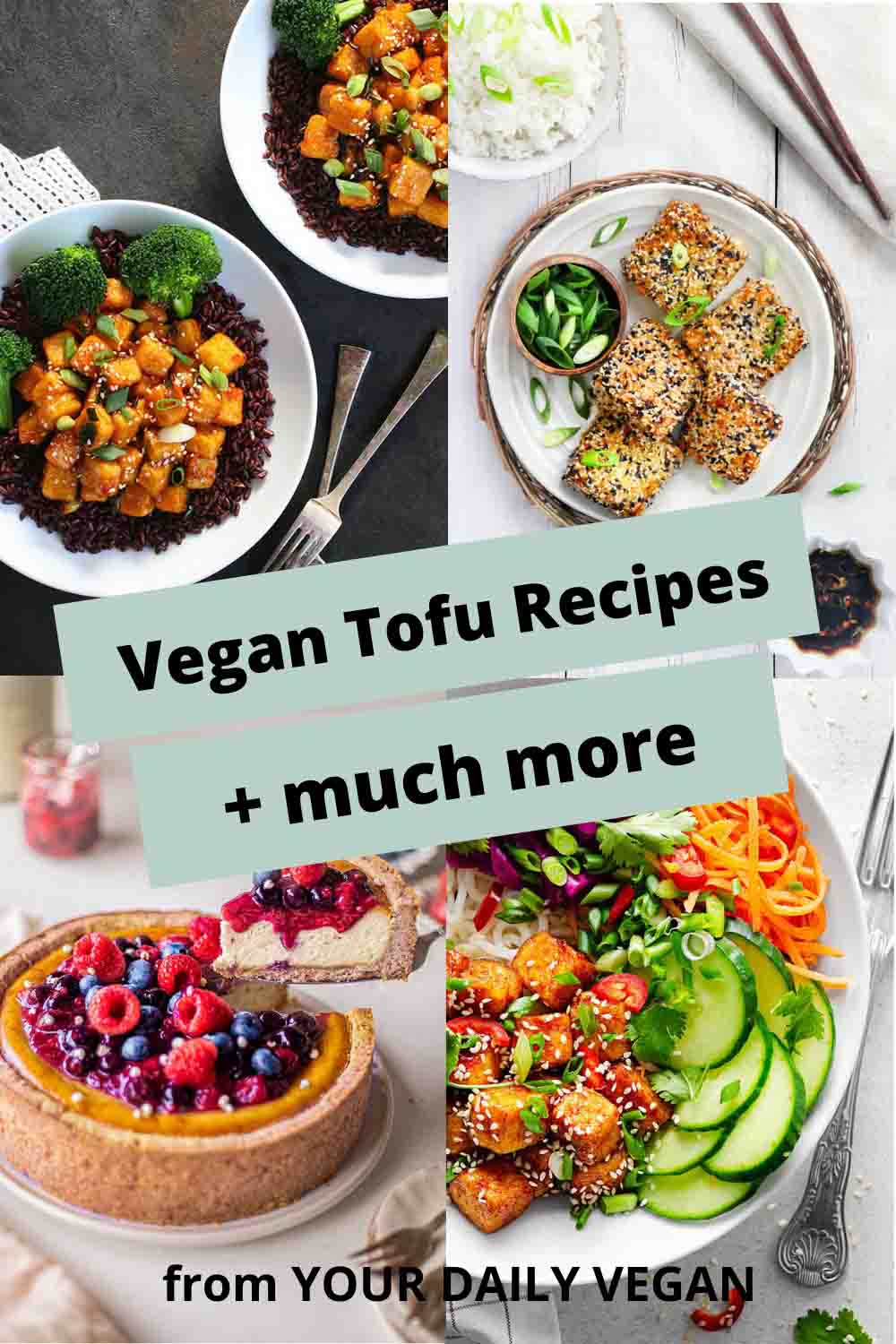
Truth in advertising
I am committed to providing accurate information to the vegan community. Meticulously researched, the topic explored in this guide contains the information available at the time of publishing.
I don’t just say it; I source it too.
Please contact me if you find incorrect data.

